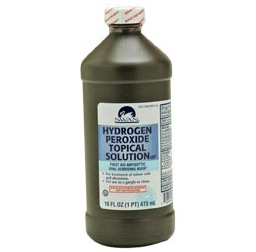Patterns of depigmentation in vitiligo
Focal vitiligo is characterized by a few scattered macules. In some cases the depigmenation remains localized to these spots. For others, focal vitiligo can be a manifestation for general vitiligo.
Focal vitiligo is characterized by a few scattered macules. In some cases the depigmenation remains localized to these spots. For others, focal vitiligo can be a manifestation for general vitiligo.
Some dermatologists recommend patients to cosmetically cover their vitiligo spots. This is associated with an improved quality of life since it reduces public stares or remarks. On the downside, covering up with makeup is time consuming - interfering with daily activities and in some cases, distress generating – the concern of permanently hiding something
These opaque foundations are especially designed to mask skin disorders such as vitiligo and are different from normal makeup.
Following a strict plan of UV sessions like the one needed for vitiligo treatment can be a daunting task. Up to 6 months of home photo-therapy with 3 or 4 weekly sessions take a lot of time. Missing out on a UV session can result in a decrease of the overall efficiency of the treatment.
This is where a smart-phone can come in handy. I've set 3 weekly reminders in the calendar of my Nokia phone in order to receive a screen notification each day a photo-therapy session is due. The reminder triggers an audio alarm in the evening, around the treatment time.
We went around online shops selling UVB lamps and scouted prices for hand-held units. As you can see prices vary depending on the producer/design/and functions.
One of the methods through which doctors can confirm the vitiligo diagnosis is by using the Woods Lamp (black light).
This equipment emits ultraviolet light on a wavelength of 365 nanometers, making a vitiligo patient's skin glow yellow green or blue. In contrast, the healhy skin will have no reaction to the UV light.
It is used to detect several skin conditions including fungal and bacterial infections and skin coloring changes such as vitiligo.

Hydrogen Peroxide is simply a water molecule (H20) with one extra oxygen molecule. Hydrogen peroxide is one of the most powerful oxidizers known - stronger than chlorine, chlorine dioxide, and potassium permanganate.
This article is a comparison between the most popular small scale lamps for the treatment of vitiligo. They both use the Phililips PL-S 9W/01/2P 1CT bulb (311 nm Narrow Band) which means the therapeutic principle is the same.
Do not despair, there are plenty of efficient therapies out there. Keep in mind that most vitiligo treatments are long term (2-6 months) and the best therapeutic plan is individual. The sooner you start treating vitiligo, the better.
Generally, young people respond well to the treatment. Most patients find it easy to repigment the face while hands and feet are particularly difficult to treat.
I often noticed people as well as medical professionals misspelling the name of our skin disorder. Probably the most common spell error accounts for the horrific "vitaligo".
So let's find out how to correctly pronounce, write and read the name of our disease. Vitiligo is pronounced vit-ihl-eye-go. The name comes from the latin "vitium", meaning fault, defect which in this case is a spot or bleamish and the suffix "ligo" which means "to cause, to provoke". So vitiligo can be translated as "causing spots, depigmentation".
To set things straight: there is no cure for vitiligo. The good news is there are some effective therapies available. In vitiligo, a treatment is not universally applicable: what works for someone may yield little or no results for someone else. There are cases in which individuals have achieved full repigmentation so we might be tempted to say they are cured. False ! Reoccurrence of spots is frequent in vitiligo patients.